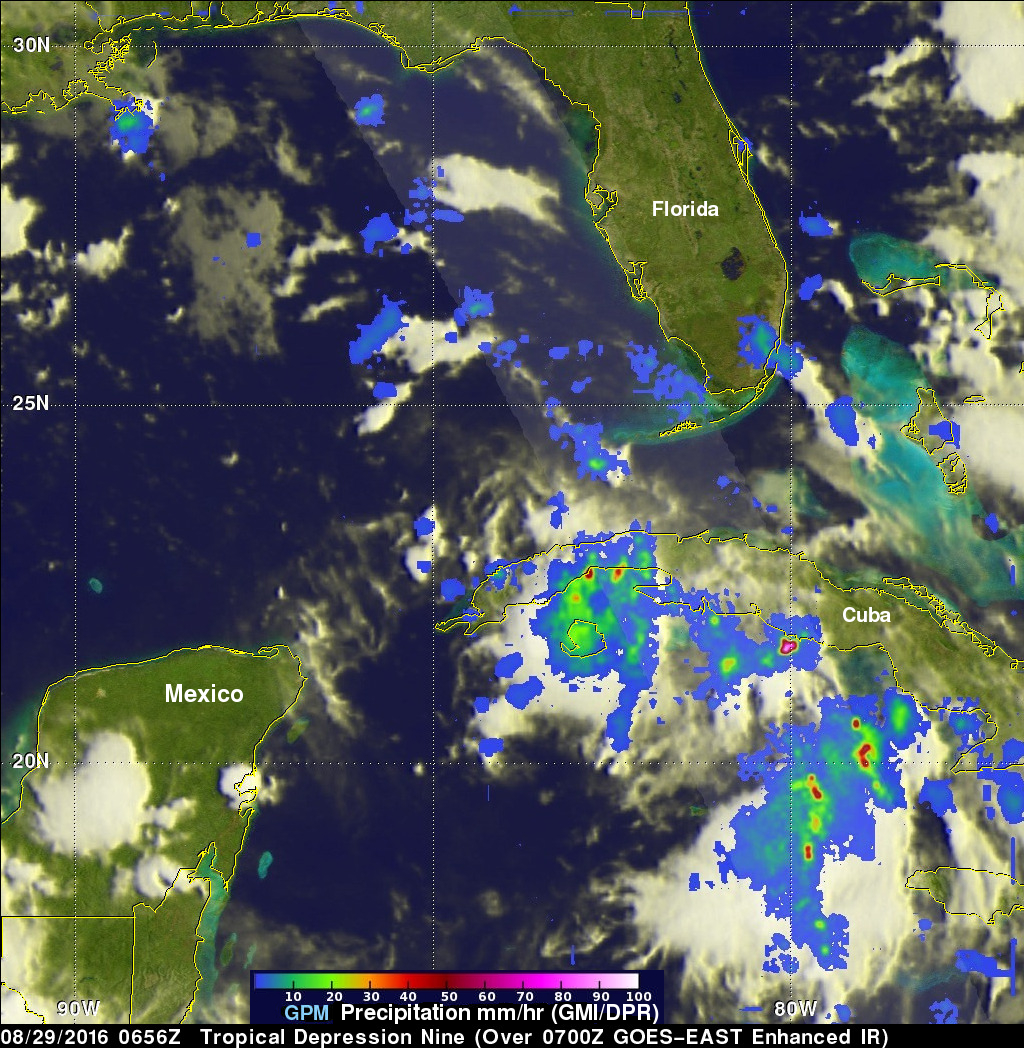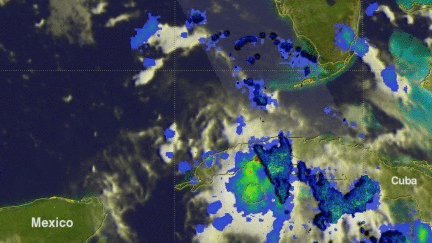Tropical Depression Nine Forms
The frequency of tropical cyclone formation has definitely increased in the Atlantic Ocean basin. A tropical wave that the National Hurricane Center (NHC) had been monitoring for development since it left the African coast almost two weeks ago was upgraded to Tropical Depression Nine (TD09L) on August 28, 2016. The low pressure became a little better organized after moving into the Florida Strait and that led to the upgrade.
The GPM core observatory satellite passed above the still relatively poorly organized tropical depression on August 29, 2016 at 2:56 AM EDT (0656 UTC). Maximum sustained wind speeds were estimated to be only 34.5 mph (30 kts). Since then deep convection associated with the tropical cyclone has increased. Rainfall measurements within TD09L were derived from GPM's Microwave Imager (GMI) and Dual-Frequency Precipitation Radar (DPR) instruments. These measurements showed that precipitation was intense in convective storms over the western side of Cuba. GPM revealed that some showers were coming down at a rate of greater than 7.6 inches (193.514 mm) per hour.
GPM's radar (DPR Ku Band) data were used to examine the 3-D structure of precipitation within storms associated with TD09L. Most thunderstorm tops around the tropical depression were found to reach heights of less than 8.7 miles (14 km). However, GPM's radar found that some storm tops in powerful convective storms in the Caribbean Sea south of Cuba were pushing up to heights above 9.9 miles (16 km).
The NHC predicts that TD09L will become a tropical storm in the Gulf Of Mexico this evening but moderate vertical shear over the next couple days is predicted to keep the tropical depression from significantly strengthening. TDO9L is expected to move toward the northwest for a couple days and then made a turn toward the northeast. It is then expected to pass over northern Florida as a strong tropical storm with winds of about 63 mph (55 kts).
GPM is a joint mission between NASA and the Japan Aerospace Exploration Agency JAXA.



